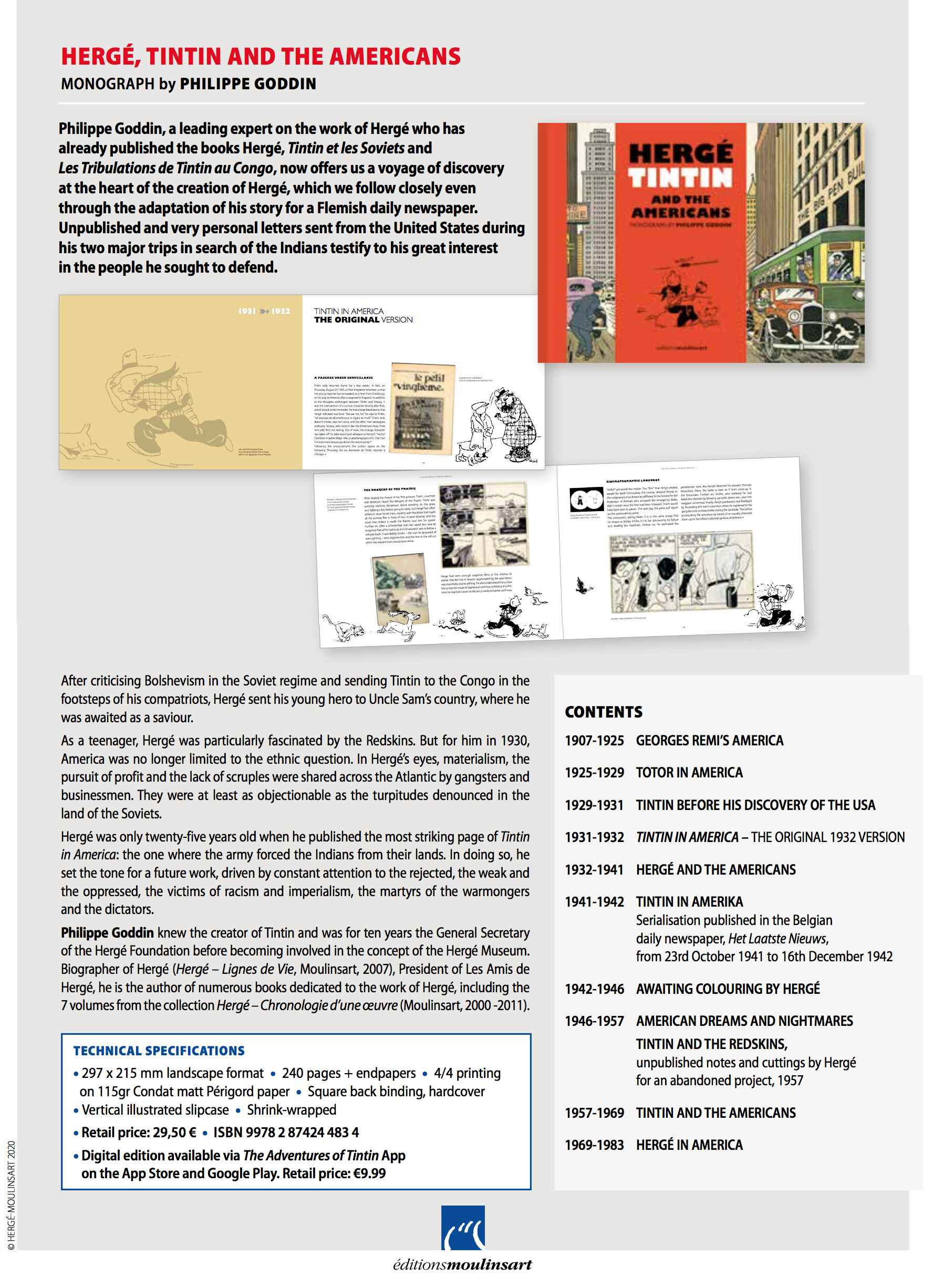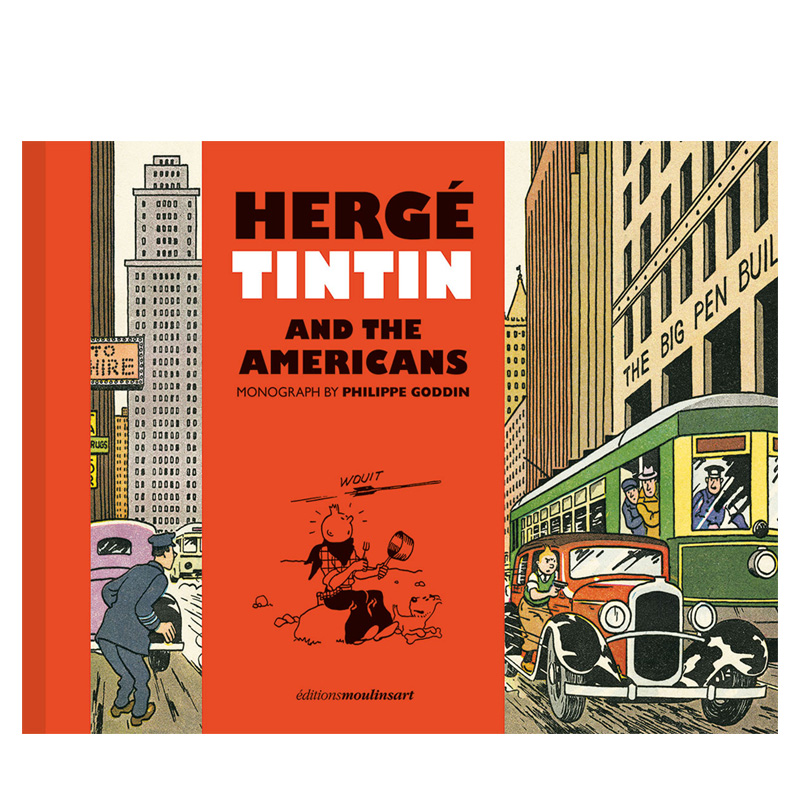10% off your first order
when you use code WELCOME10 at checkout
Hergé, Tintin and the Americans
Philippe Goddin, a leading expert on the work of Hergé who has already published the books Hergé, Tintin et les Soviets and Les Tribulations de Tintin au Congo, now offers us a voyage of discovery at the heart of the creation of Hergé, which we follow closely even through the adaptation of his story for a Flemish daily newspaper.
Unpublished and very personal letters sent from the United States during his two major trips in search of the Indians testify to his great interest in the people he sought to defend.
After criticising Bolshevism in the Soviet regime and sending Tintin to the Congo in the footsteps of his compatriots, Hergé sent his young hero to Uncle Sam’s country, where he was awaited as a saviour.
As a teenager, Hergé was particularly fascinated by the Redskins. But for him in 1930, America was no longer limited to the ethnic question. In Hergé’s eyes, materialism, the pursuit of profit and the lack of scruples were shared across the Atlantic by gangsters and businessmen. They were at least as objectionable as the turpitudes denounced in the land of the Soviets.
Hergé was only twenty-five years old when he published the most striking page of Tintin in America: the one where the army forced the Indians from their lands. In doing so, he set the tone for a future work, driven by constant attention to the rejected, the weak and the oppressed, the victims of racism and imperialism, the martyrs of the warmongers and the dictators.
Philippe Goddin knew the creator of Tintin and was for ten years the General Secretary of the Hergé Foundation before becoming involved in the concept of the Hergé Museum. Biographer of Hergé (Hergé – Lignes de Vie, Moulinsart, 2007), President of Les Amis de Hergé, he is the author of numerous books dedicated to the work of Herge, including the 7 volumes from the collection Hergé – Chronologie d’une œuvre (Moulinsart, 2000 -2011).
Take a look at Tintin in America here.




